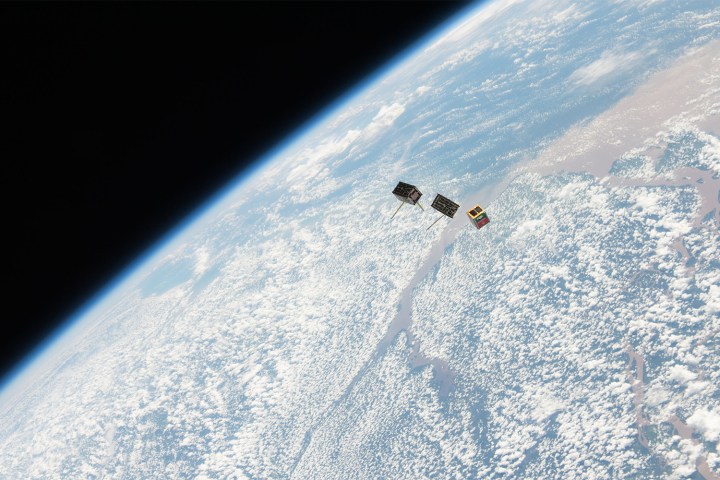
The Air Force is asking for help in developing plasma bombs, which would be delivered to the atmosphere by tiny cube satellites and then detonated to release ions upon arrival. The Air Force is working with several research teams, each of which is tasked with coming up with their own design for the plasma bombs. The first stage of the project is theoretical, requiring researchers to come up with an atmospheric plasma delivery method. Selected researchers then will be invited to test their proposal in a vacuum chamber simulator and eventually on exploratory flights.
One team, comprised of researchers from Drexel University and General Sciences, is developing a controlled bomb that uses a chemical reaction to heat a piece of metal beyond its boiling point. Once vaporized, the metal will react with atmospheric oxygen to create the ionized plasma. Another proposal under development by researchers from the University of Maryland and Enig Associates also uses vaporized metals to supercharge the atmosphere. This proposal is much more explosive, though, using mini-detonations to heat pieces of metal rapidly, causing them to vaporize. The amount of plasma produced in this latter reaction can be controlled by changing the intensity and form of the explosion.
Though using plasma bombs may be unconventional and even controversial, the science behind the Air Force’s plan is sound. By releasing plasma bombs into the atmosphere, the Air Force would increase the quantity of ions in the layer of the atmosphere known as the ionosphere, which starts at an altitude of approximately 60 kilometers. Radio waves interact with this layer when they travel, so modifying it can have a significant effect on radio communications.
Radio signals released by a ground source travel upward until they hit the ionosphere and bounce back to earth in a zigzag pattern. Radio waves that bounce between the ionosphere and ground are able to travel longer distances. This bounce-back effect is influenced by the number of ions in the ionosphere. By using plasma bombs to increase the number of charged particles in the atmosphere, the Air Force expects to improve this bounce-back effect and boost communications. As a side effect, the Air Force also notes that this dense ion layer also will neutralize incoming solar storms, protecting sensitive networks such as GPS from disruption.
The idea of artificially ionizing the atmosphere to improve radio communications is nothing new and is already being used in Alaska. The High Frequency Active Auroral Research Program uses ground-based antennas to bombard the ionosphere with radiation. This radiation produces radio-reflecting plasma that, in turn, improves radio communication. The plasma bomb idea builds upon the HFAARP program by modifying the ionosphere directly instead of relying on ground-based technology. Despite its promise, though, it is not known whether these plasma bombs will be powerful enough to make any significant changes in atmospheric ionization.
Editors' Recommendations
- U.S. airports safer after software upgrades aimed at preventing taxiway landings
- ‘Skyborg’: U.S. Air Force seeks fleet of autonomous planes
- Trump reportedly still wants U.S. government to get paid in proposed TikTok sale
- U.S. Air Force’s secretive space plane bags prestigious aerospace award
- SpaceX and United Launch Alliance win launch contracts for U.S. Air Force





